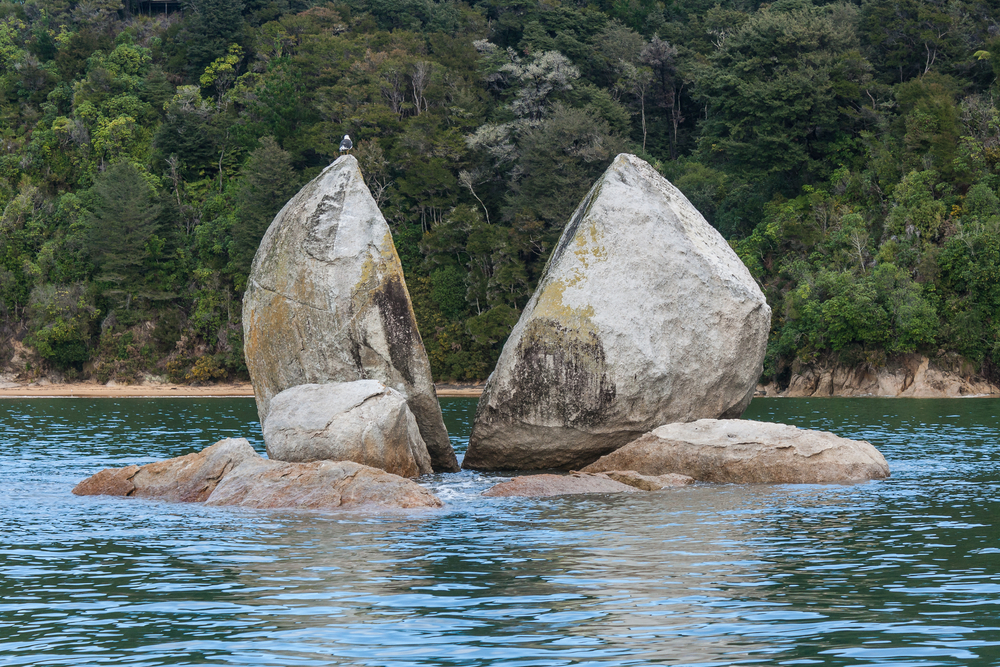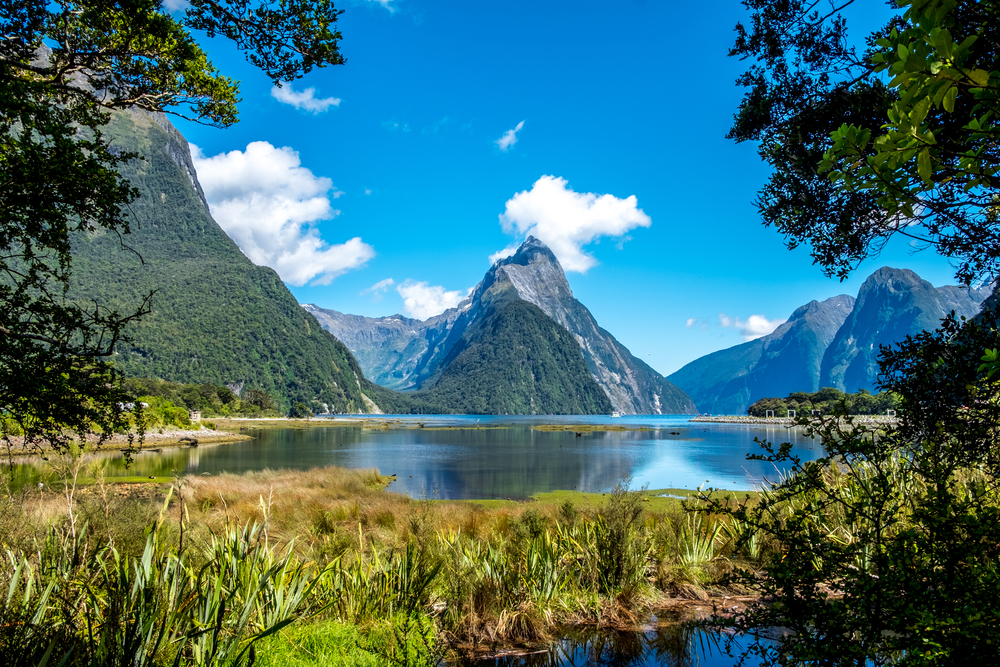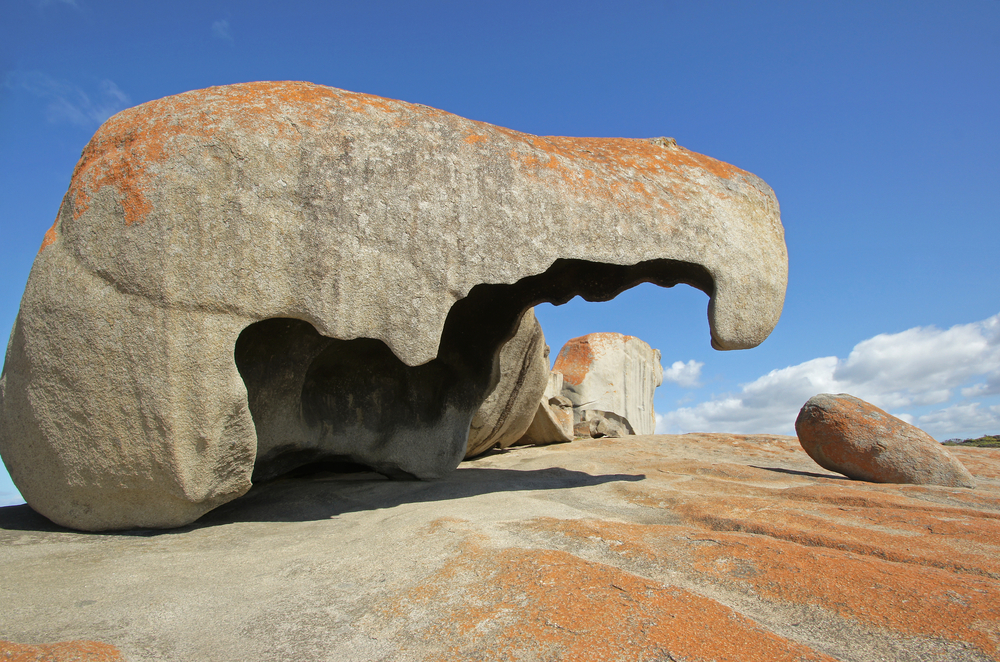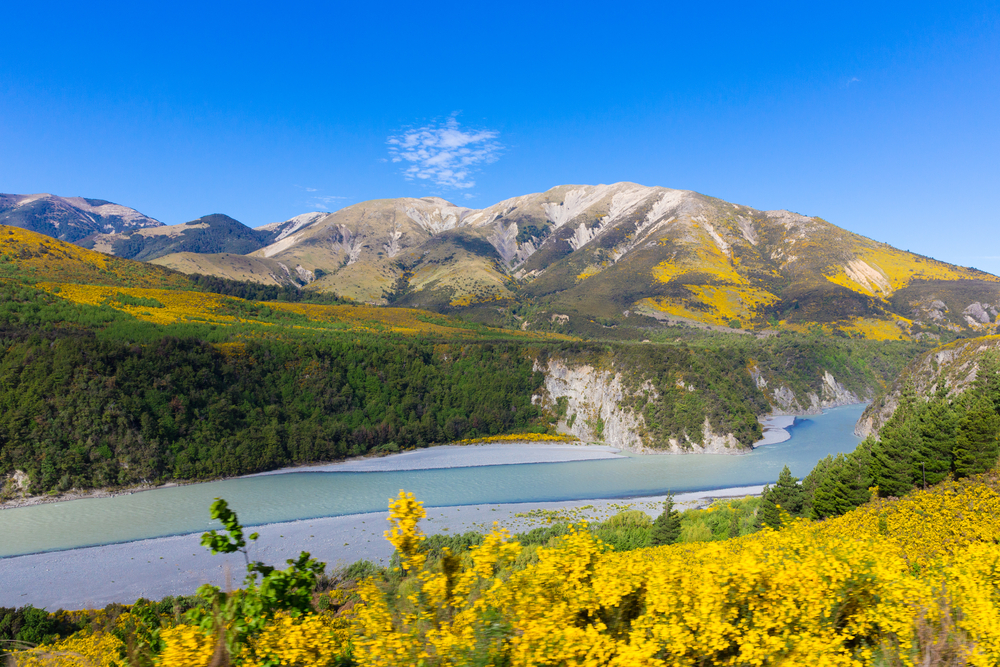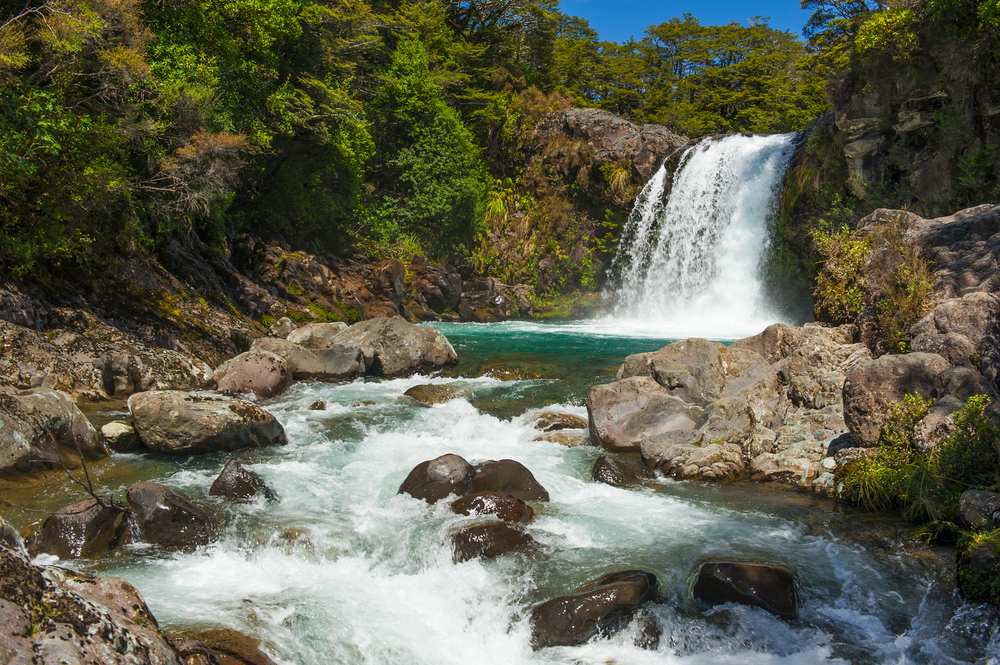Egmont Overview
Egmont National Park, known as Te Papakura o Taranaki in the Māori language, is located on the western coast of New Zealand’s North Island.
Covering approximately 94 square miles (243 square kilometers), the park is dominated by Mount Taranaki, a strikingly symmetrical stratovolcano that stands at 8,261 feet (2,518 meters). The mountain, often shrouded in mist, serves as the park’s centerpiece and is one of the most photographed landmarks in New Zealand due to its resemblance to Japan’s Mount Fuji.
The landscape surrounding Mount Taranaki features lush rainforests, subalpine scrub, and alpine herb fields, creating a stunning contrast between the green lowlands and the rugged volcanic summit. The park’s terrain includes deep river valleys, waterfalls such as Dawson Falls and Bells Falls, and the remnants of lava flows that have shaped the region’s topography over thousands of years.
The vegetation of Egmont National Park is diverse, with dense temperate rainforest covering the lower slopes of the mountain. These forests are home to towering rimu and kahikatea trees, as well as tree ferns that create a prehistoric, lush atmosphere. As elevation increases, the forest transitions to subalpine shrubs and tussock grasslands before giving way to barren rock near the summit.
The change in vegetation zones is particularly dramatic, with the park’s unique “Goblin Forest” offering an otherworldly experience where twisted kamahi trees are draped in thick moss and lichen. This distinctive landscape supports a variety of native wildlife, including the North Island brown kiwi, which can sometimes be heard at night.
Other notable bird species include the rare blue duck (whio), tomtit, New Zealand falcon (kārearea), and the melodious tūī. While larger mammals are absent due to New Zealand’s geographical isolation, visitors may encounter small native bats and a variety of introduced species such as possums and stoats, which pose conservation challenges.
Egmont National Park is popular for its hiking and mountaineering opportunities, drawing visitors eager to explore its well-maintained trails. The Pouakai Circuit is a multi-day trek that provides breathtaking views of Mount Taranaki, passing through alpine tarns and golden tussock lands.
The summit climb is a challenging but rewarding experience, offering panoramic vistas on clear days. Shorter walks, such as the Wilkies Pools Loop Track, lead to scenic rock pools formed by ancient lava flows. The park also features historic huts, including Syme Hut, perched high on the slopes, providing shelter for adventurous climbers. In the winter months, the Stratford Mountain Club operates a small ski area, adding to the variety of activities available.
Conservation efforts within the park focus on restoring native biodiversity by controlling invasive species such as rats, stoats, and possums, which threaten the park’s delicate ecosystem. Predator control initiatives, including the Taranaki Mounga Project, aim to create a predator-free environment, allowing native birds to thrive. These efforts have led to a resurgence of species like the North Island robin and increased sightings of the kiwi.
Despite these successes, the park faces ongoing challenges due to climate change and the impact of introduced species. However, through continuous conservation initiatives and community engagement, Egmont National Park remains a remarkable natural sanctuary where visitors can experience the wild beauty of New Zealand’s volcanic landscapes.











































































